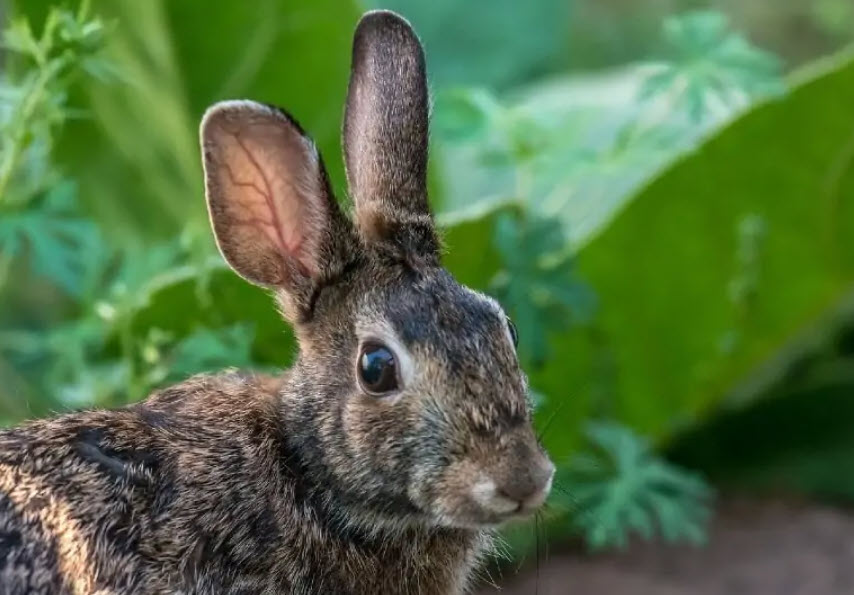The humble rabbit reveals its inner world through a complex language of ear positions and movements. To the uninformed, these may seem like nothing more than random ear twitches and turns. But each subtle flick and rotation reflects vital mood and mindset cues if you know what to look for. Welcome to the hidden communication code of the rabbit – an intricate array of signals that provides a window into how these sensitive creatures are reacting to their environment. Learning this unspoken vocabulary unlocks new understanding of rabbit behavior and new bonds of rabbit rapport. Let’s delve into the descriptive dictionary of lop ears and upright ears alike to uncover what rabbits are saying without words.
Understanding rabbit behavior as a whole
Rabbits have very expressive body language that can indicate how they are feeling. Their ears in particular can convey a lot of information. Rabbits move their ears frequently, and the positions and motions relate to mood and attentiveness. Ear positions and movements should be interpreted within the context of the rabbit's overall body language. For example, an alert rabbit with ears up is likely feeling curious, while the same ear position paired with teeth grinding could mean the rabbit is in pain.
Ear positions in rabbits
Rabbits use their ears both for hearing and communication. The ears can swivel almost completely independently to pick up sounds from all directions. They also use ear positioning and movement to signal emotions and react to their environment. Understanding a rabbit's ear language provides insight into how they are feeling.
Upright and relaxed ears
When a rabbit holds its ears upright and a bit relaxed or loosely angled, it is feeling calm and content. The rabbit is at ease in its environment. Both ears will be up with a relaxed pose.
Upright and rigid ears
Ears that are upright but stiff and rigid indicate an alert or startled rabbit. The rabbit is intently focusing on something, likely something unusual or concerning in its surroundings. Both ears will point upright and be stiff.
Ears slanted forward
Rabbit ears slanted forward communicate engagement and interest. The rabbit is curious and paying close attention to something. Both ears tilt slightly forward.
Ears slanted backward
Ears slanted back display suspicion or caution. The rabbit is communicating wariness about something behind or nearby. Both ears tilt backwards.
Ears together along the rabbit’s back
When a rabbit presses its ears back tight against its body, it is signaling fear or submission. The flattened ears demonstrate the rabbit is scared of something or someone.
Ears apart along the rabbit’s back
Ears positioned apart and pressed against the back often occurs with rabbits showing aggression. It is a defensive, threatening posture.
One ear up
If one ear is up and one ear is down, the rabbit is divided in focus. It is concentrating on two different things at once, or switching its attention back and forth.
Swiveling ears
A rabbit swiveling its ears is tuning in to sounds around it. The rabbit is intently listening to try to interpret auditory cues. The ears flick around like satellite dishes to catch all available noises.
Shaking ears
Rabbits may rapidly shake their heads and ears in grooming behavior, but also as a means of self-soothing when frustrated. It can signal annoyance.
Lop-eared rabbit ear positions
Lop-eared rabbits have ears that hang down instead of standing upright. However, their ear positioning and movement also gives clues into mood and mindset.
Relaxed ears
When relaxed, lop ears will hang loosely on either side of the head. The rabbit is calm.
Ears swing forward
Interest causes lop-eared rabbits' ears to swing forward. The rabbit is focusing intently on something and paying close attention.
Ears swing backward
If lop ears swing back suddenly, the rabbit is startled or anxious. Something has caused fear or suspicion.
Rotated ears
Lops may rotate their ears to listen closely to sounds. Usually one ear is forward while the other is back.
Airplane ears
Extreme fear or aggression in lop rabbits may be shown by ears pressed tightly back against the head, like "airplane ears."

